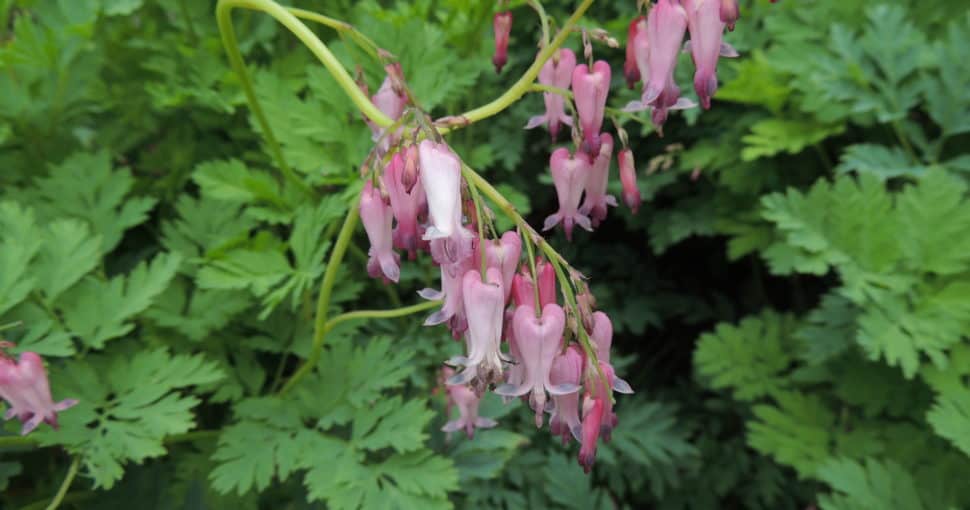When handled or eaten, many of the exotic and native plants in our area can affect minor irritation or even death if ingested in large quantities. The use of the phrase “poisonous” may cause unwarranted anxiety. Some poisonous plants give only mild discomfort, while others are highly toxic. Having said that, these are the plants one should be careful with in the New England region.
Contents
- 1. Giant Hogweed (Heracleum mantegazzianum)
- 2. Poison Sumac (Toxicodendron vernix)
- 3. Mountain Laurel (Kalmia latifolia)
- 4. Fringed Bleeding Heart (Dicentra eximia)
- 5. Solomon’s Seal (Polygonatum odoratum)
- 6. White Baneberry (Actaea pachypoda)
- 7. Canadian Anemone (Anemone canadensis)
- 8. Dogbane/Indian Hemp (Apocynum cannabinum)
- 9. Whorled Milkweed (Asclepias verticillata)
- 10. Spreading Dogbane (Apocynum androsaemifolium)
- 11. Pink Lady’s Slipper (Cypripedium acaule)
- 12. Kalm’s St. John’s Wort (Hypericum kalmianum)
- 13. Spotted Touch Me Not (Impatiens capensis)
- 14. Lupine (Lupinus)
- 15. Jack-in-the-pulpit/Indian Turnip (Arisaema triphyllum)
A plant being declared toxic does not mean that all of the plant’s parts are toxic, nor does it mean that it is harmful to all humans who come into contact with it. Reactions to dangerous plants can be triggered by direct contact with the plants or by ingesting the deadly elements of the plants.
The sooner you take action, the better. In the event of a seizure, difficulty breathing, or loss of consciousness, dial 911 immediately. Try drinking a little water or milk if your mouth or throat feels inflamed. Take a deep breath of fresh air and get far away from any suspected hazardous smells.
If the poison has gotten on your skin, wash it off as soon as possible. If you can, use saline drops to rinse your eyes if it got in there. Keep going for around 15 minutes or more. For information on specific toxins, contact your local poison control center right away.
Here is a list of 15 poisonous plants in New England:
1. Giant Hogweed (Heracleum mantegazzianum)
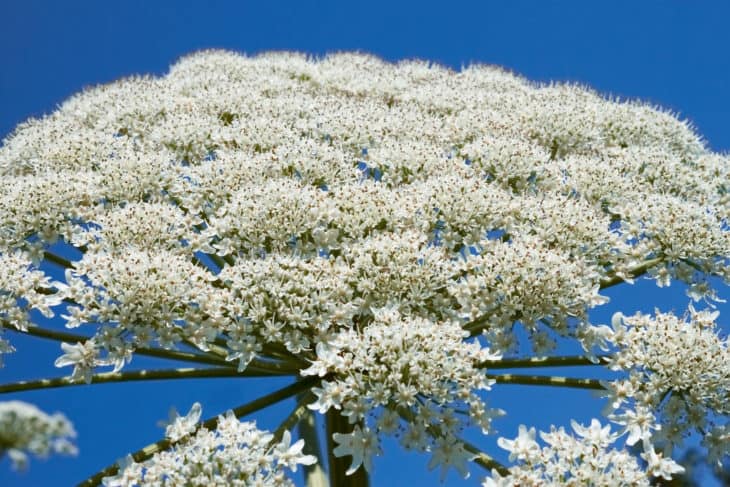
Hogweed may have the appearance of small daisies. However, the weed is actually exceedingly hazardous. It is possible to become blind after coming into touch with the sap of the hogweed plant. Just rubbing up against the plant can result in painful burning, permanent injuries, extreme eye and skin irritation, and even blindness.
2. Poison Sumac (Toxicodendron vernix)
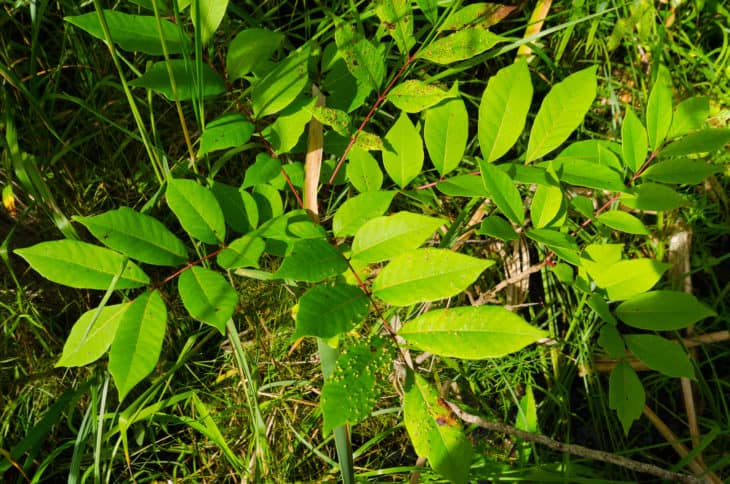
All over the United States, swampy environments are home to this woody shrub. Bunches of green berries droop from the stems and can cause serious itching and burning. Waiting for a week for the itch alleviation you’re looking for with cool showers and calendula lotion. In case you observe pus or smoke coming out of the rash, you should see a doctor.
3. Mountain Laurel (Kalmia latifolia)
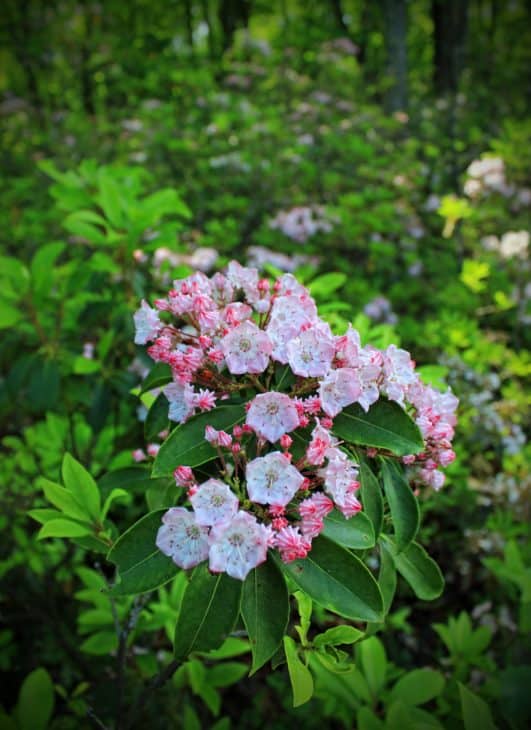
Mountain laurel is deadly in all of its forms, from the leaf to the stem to the branch. According to the United States Department of Agriculture, it can potentially be lethal to people and certain animals. If you consume it in great quantities, your mouth, lips, and throat will become red and sore.
4. Fringed Bleeding Heart (Dicentra eximia)
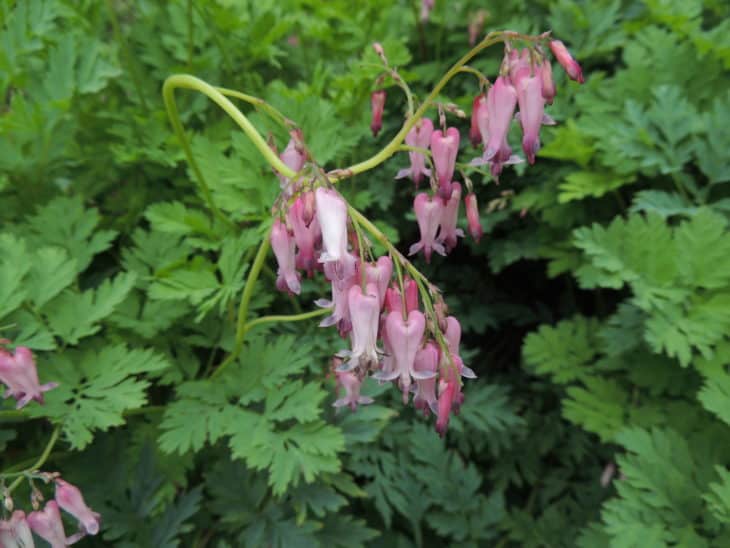
The poisonous properties of this plant are of modest severity. Native to the Appalachian Mountains, fringed bleeding heart is a stunning perennial found on forest floors, rocky forests, and ledges. A damp winter soil is a turnoff, as it enjoys a rich, wet, well-drained soil. When taken in significant amounts, the poisons in bleeding hearts may induce liver failure and epilepsy in humans.
5. Solomon’s Seal (Polygonatum odoratum)
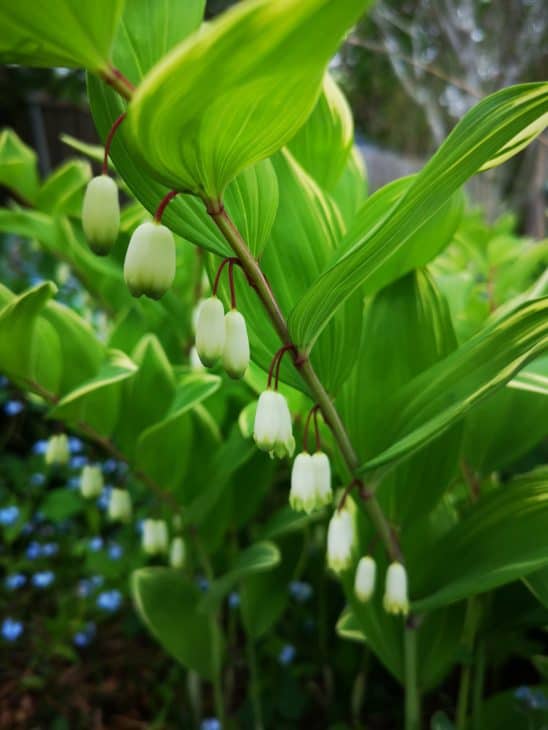
All adult plant parts, excluding the root and sensitive new shoots, are toxic and should not be eaten, especially the berries. Chewing the berries can cause vomiting, while the leaves can cause nausea if they are eaten. Repeated vomiting accompanied by salivation occurs between 15 minutes and six hours following consumption. Diarrhea, which may be hemorrhagic, may also be present, and abdominal pain may be felt.
6. White Baneberry (Actaea pachypoda)
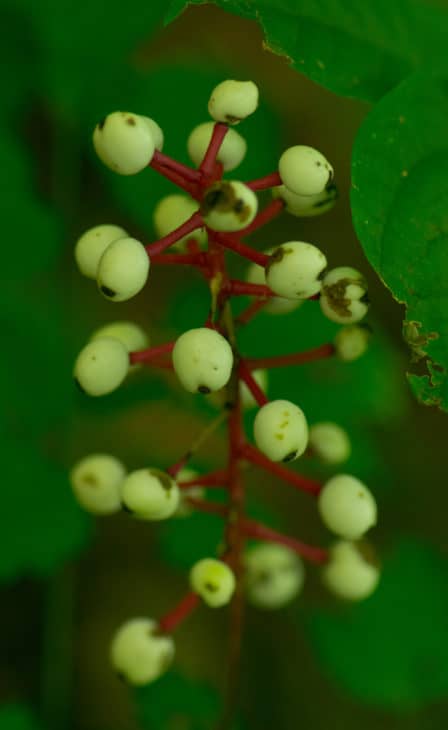
The baneberry, also known as Actaea, is a flowering plant that belongs to the Ranunculaceae species. It is popularly known as “doll’s eyes,” especially because the plants’ blossoms are red or white with dark dots on them. The berry, which is the most dangerous portion of the plant, carries a poisonous substance that has an instantaneous effect on the heart’s muscles, resulting in cardiac arrest and death if not treated immediately.
7. Canadian Anemone (Anemone canadensis)
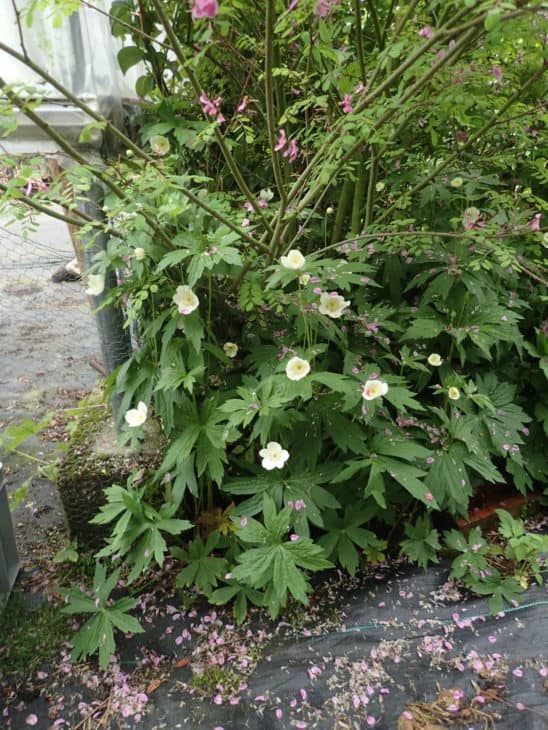
Despite the fact that this plant is deadly in all sections, it is only harmful when taken in big numbers. This plant comes in a variety of colors: purple, yellow, white, and red, and after coming into touch with new sap, symptoms such as inflammation and blistering appear, as well as discomfort of the mouth, nausea, vomiting , and diarrhea may occur.
8. Dogbane/Indian Hemp (Apocynum cannabinum)
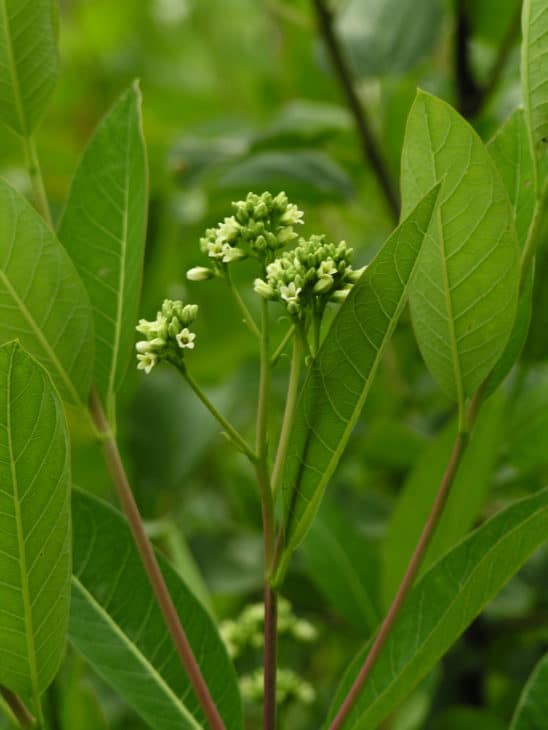
Cultivated in much of North America, Canada, and the entire United States, Apocynum cannabinum is an herbaceous plant that flourishes throughout the region. It is a deadly plant; the name Apocynum literally translates as “poisonous to dogs.” Ingesting any portion of the plant is dangerous and can result in a heart attack if the poison is consumed.
9. Whorled Milkweed (Asclepias verticillata)
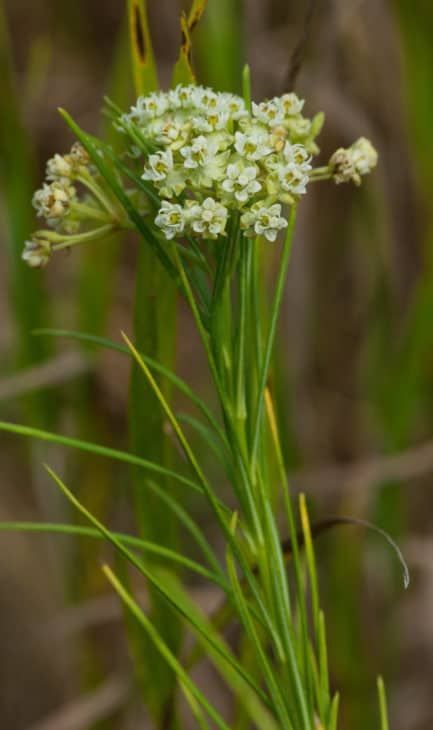
Western whorled milkweed includes a large number of neurotoxic chemicals that have not been identified and are hazardous to cattle. When taken, cardenolides (powerful cardiac poisons) are found in the broad-leaved milkweeds and those that do not have whorled, narrow leaves. Other glycosides and resinoids harm the respiratory and digestive systems when consumed.
10. Spreading Dogbane (Apocynum androsaemifolium)
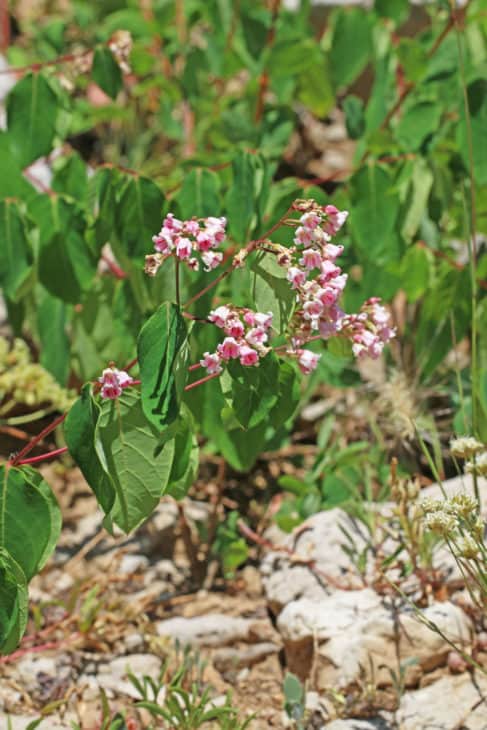
Humans, dogs, livestock, and other mammals are claimed to be poisoned by all parts of the plant, which includes the leaves. Heart-damaging cardiac glycosides are present in the nectar that flows when you tear a leaf or stem of Spreading Dogbane, which is harmful to humans. The roots of spreading dogbane carry cymarin, which is a potent heart stimulant.
11. Pink Lady’s Slipper (Cypripedium acaule)
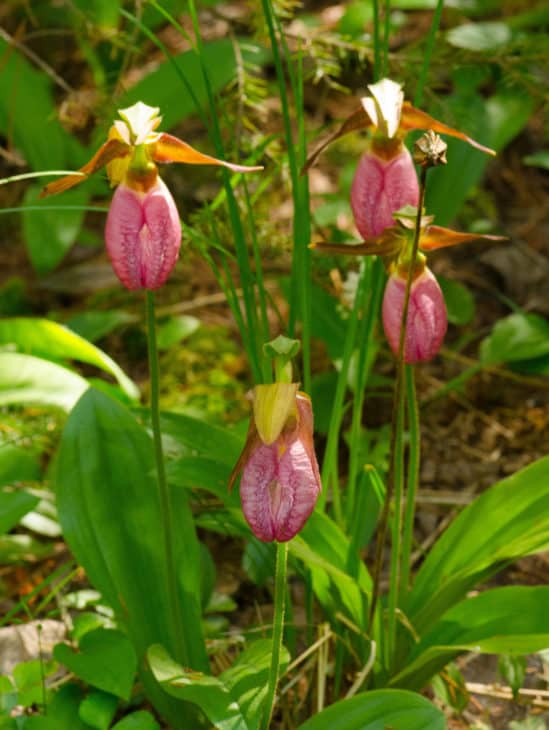
Picking up a pair of pink lady’s slippers is not recommended. This plant is covered in minute glandular hairs that cause a reaction similar to the one induced by poison ivy that develops on their leaves and can damage the skin and cause itchiness. If you come across one, please follow the principles of Leave No Trace. You should not pick any part of this plant.
12. Kalm’s St. John’s Wort (Hypericum kalmianum)
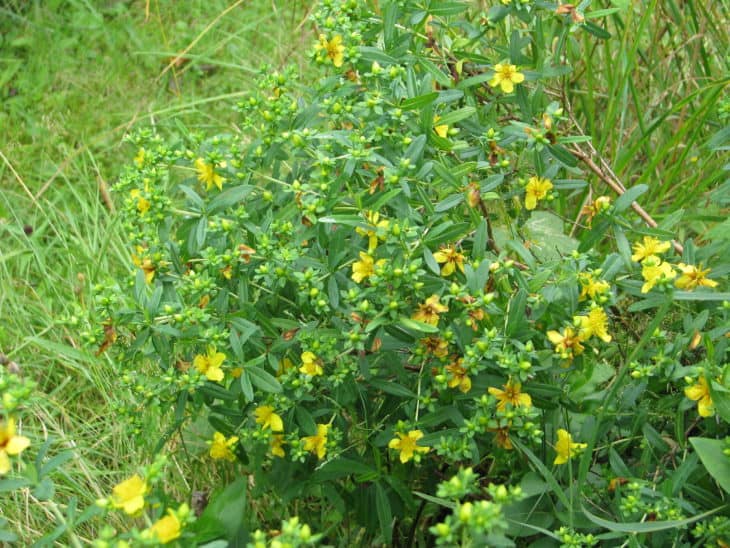
Even a small amount can be poisonous to dogs, while on the other hand, it is poisonous to humans only if consumed in large quantities. St. John’s wort, also called Klamath weed, produces hypericin, a toxin that can cause photosensitization in dogs and a host of other health problems when consumed. Some of the negative effects it might induce in humans include diarrhea, dizziness, insomnia, restlessness, and burning of the skin.
13. Spotted Touch Me Not (Impatiens capensis)
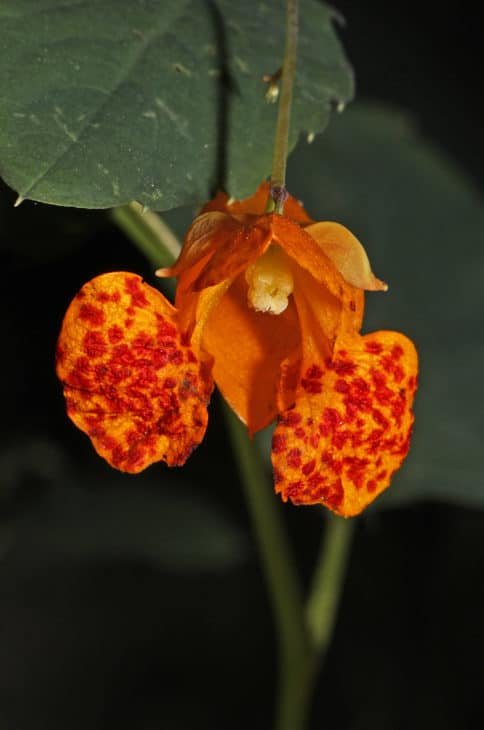
Identification of this plant is simple due to the fact that the stem is partly translucent. They are alternating in arrangement and have a serrated border and a somewhat fuzzy underside. The flowers, which are orange and yellow with dark speckles, mature in the early fall. When the herb reaches maturity, it forms a shell that pops open, releasing the seeds.
Alternatives: 8 Plants That Look Like Impatiens
14. Lupine (Lupinus)
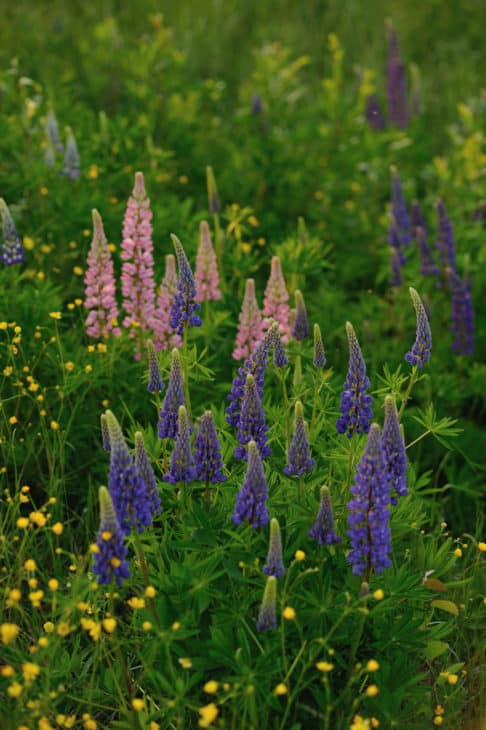
Lupine hay is still hazardous, and it has been claimed that it has poisoned sheep in the past. Some lupine alkaloids, rather than causing direct toxicity, can cause birth abnormalities in cattle if consumed during particular gestational periods. This is more prevalent than direct poisoning. When taken in large numbers, this can result in toxicity in both people and animals.
15. Jack-in-the-pulpit/Indian Turnip (Arisaema triphyllum)
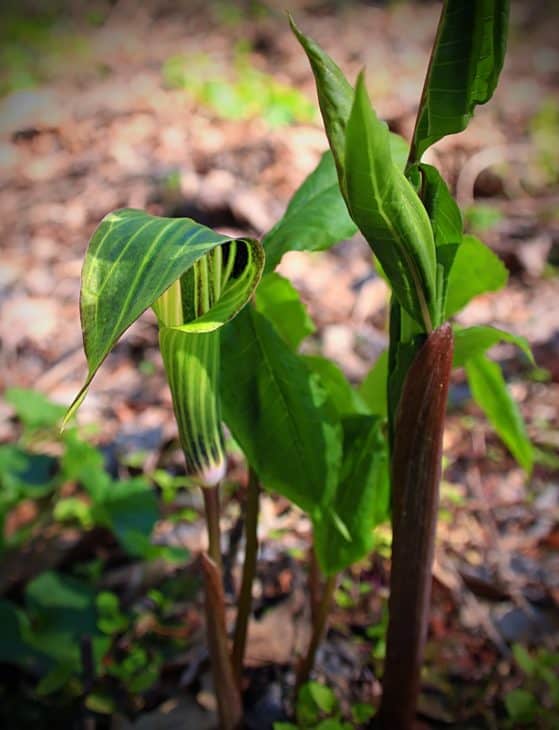
Although native to the eastern and Midwestern United States, jack in the pulp can be cultivated in shade gardens in other parts of the country as well. Jack-in-the-pulpits are harmful, according to the legends you may have heard. CaCl2 is found in the plant’s roots, berries, and corms in the form of crystallized calcium oxalate compounds.

